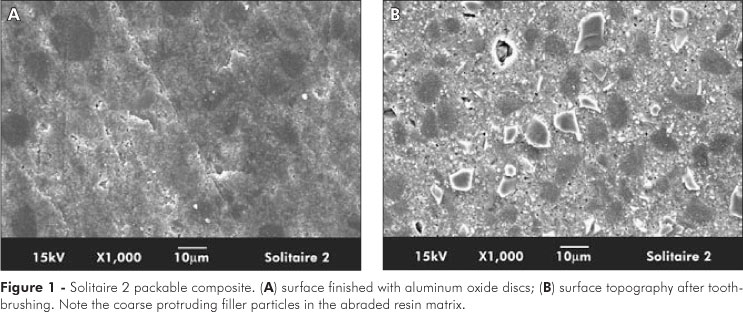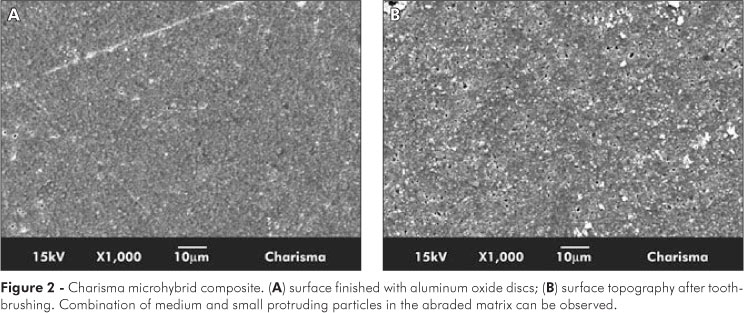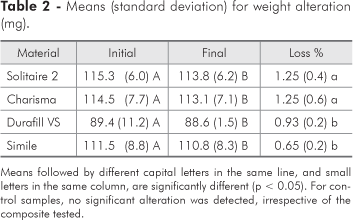This study evaluated weight loss and surface roughening after toothbrushing of different resin composites: one packable (Solitaire 2, Heraeus Kulzer), one microhybrid (Charisma, Heraeus Kulzer), one nanohybrid (Simile, Pentron) and one microfilled (Durafill VS, Heraeus Kulzer). Cylindrical specimens (n = 20) were prepared. Half of the samples were submitted to 60,000 strokes, at 4 Hz, with a dentifrice-water slurry. Control samples (n = 10) remained stored at 37°C. Pre- and post-abrasion parameters for weight (mg) and surface roughness (Ra, µm) were determined on an analytical balance and a surface profilometer. Data were separately submitted to Repeated Measures ANOVA and Tukey's test (a = 0.05). Percentages of weight loss were analyzed by ANOVA and Tukey's test (a = 0.05). The relationship between both evaluations was assessed by Pearson's test (a = 0.05). The means (%) for weight loss (standard deviation) were 0.65(0.2), 0.93(0.2), 1.25(0.6) and 1.25(0.4) for Simile, Durafill, Charisma and Solitaire, respectively. Baseline roughness means ranged from 0.065(0.01), 0.071(0.01), 0.066(0.02) and 0.074(0.01) for Simile, Durafill, Charisma and Solitaire, respectively, to 0.105(0.04), 0.117(0.03), 0.161(0.03) and 0.214(0.07) after testing. The composites with larger fillers presented higher weight loss and roughening than the finer materials (p < 0.05). For both evaluations, control specimens showed no significant alteration. No significant relationship between loss of weight and roughness alteration was detected (r = 0.322, p = 0.429).
Composite resins; Surface properties; Physical properties; Toothbrushing







